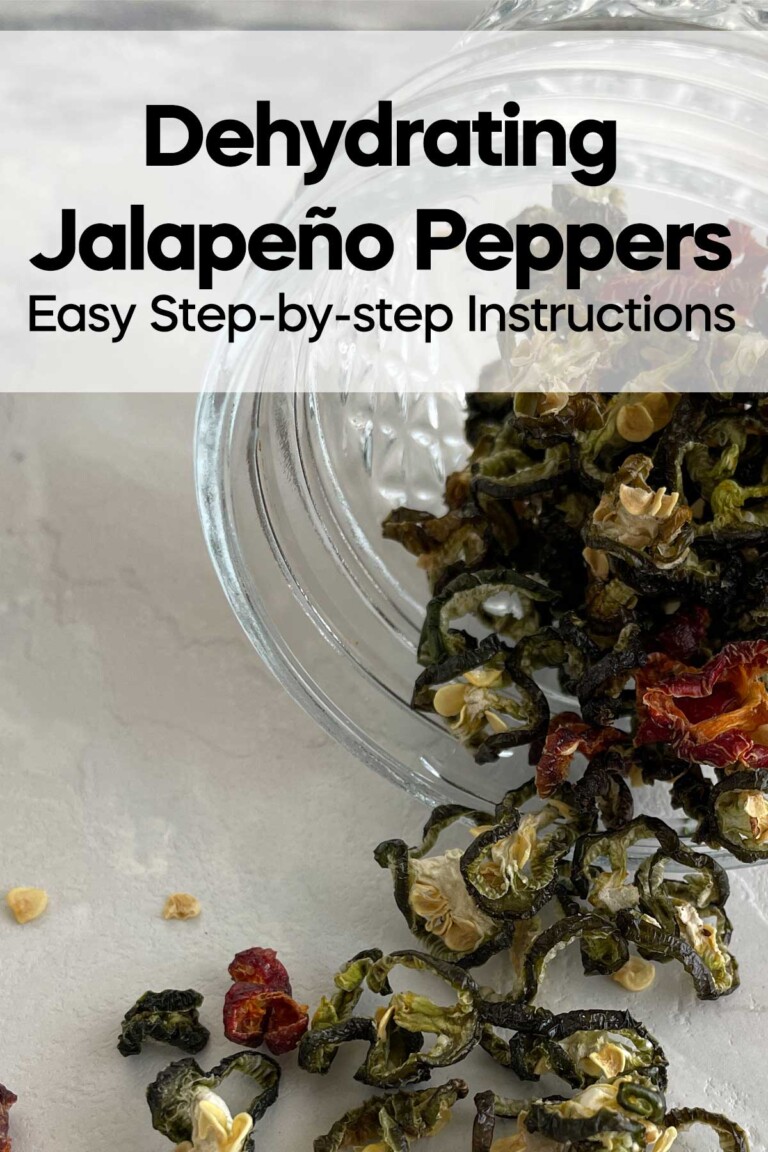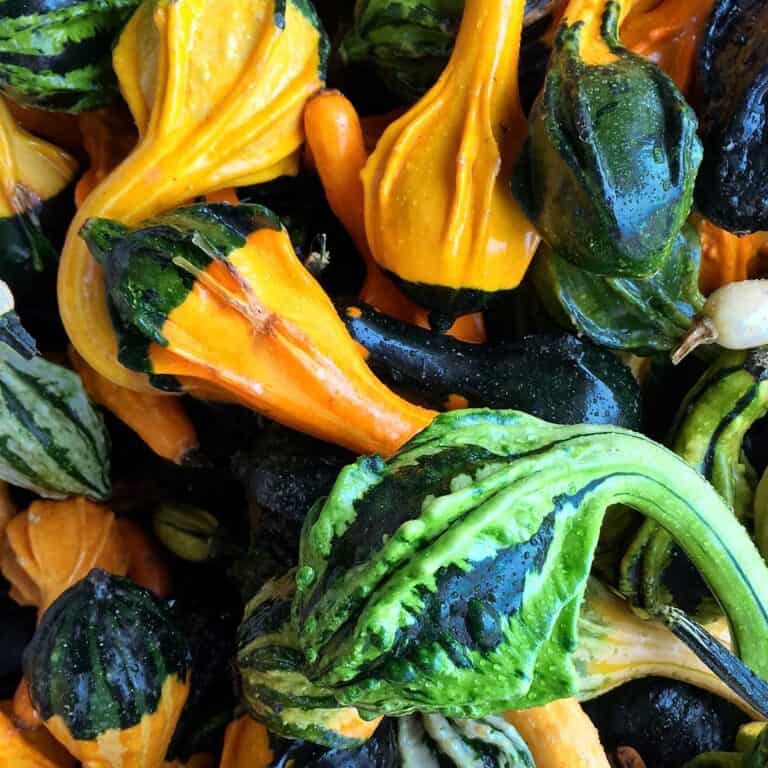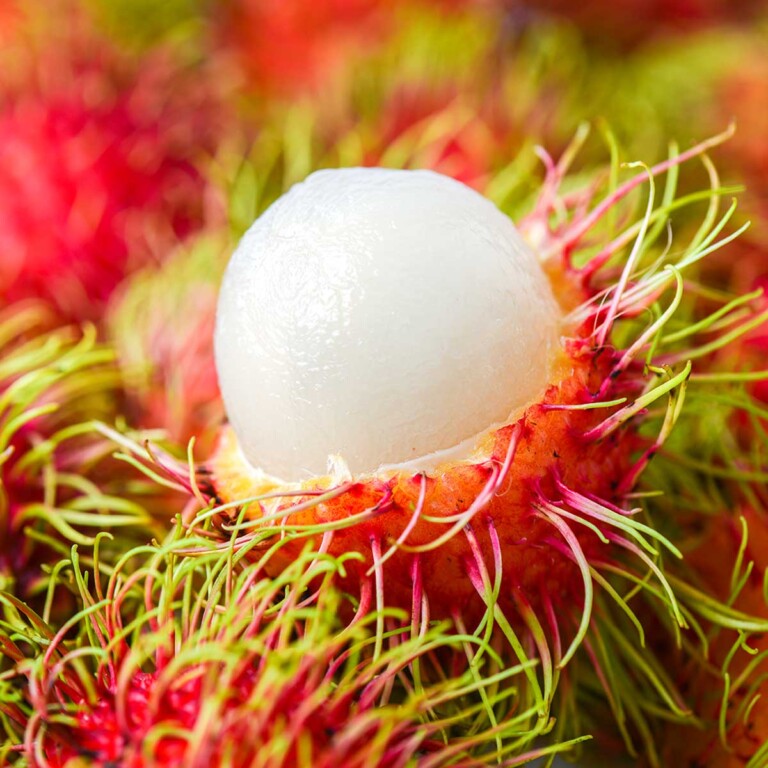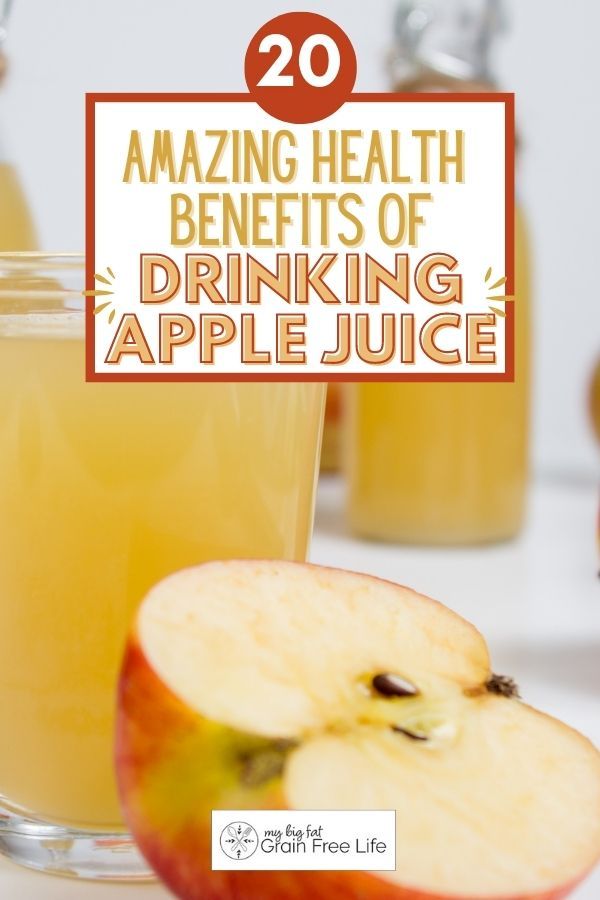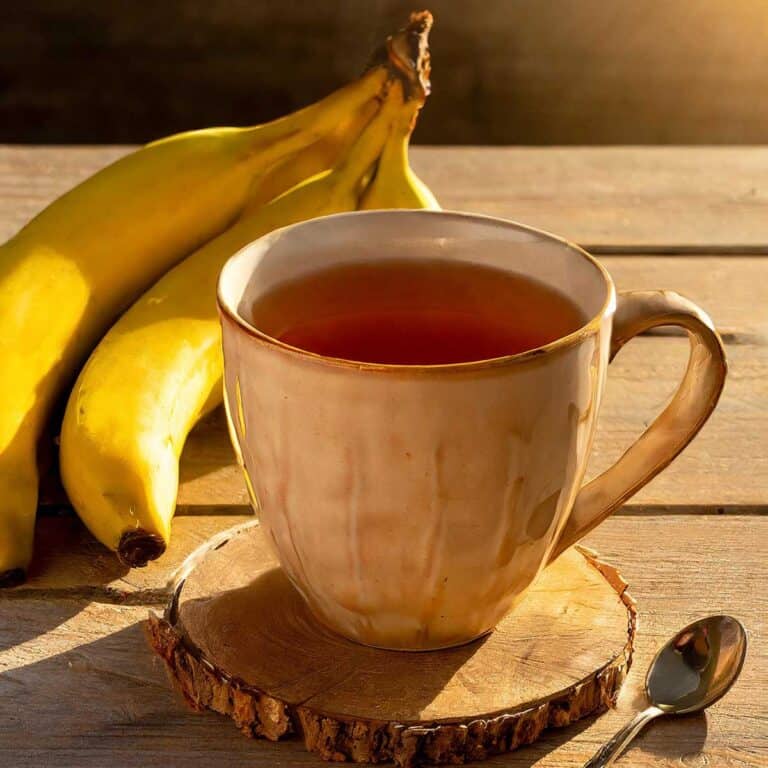Red Bananas: Facts, Health Benefits & Ways to Use Them
This post may contain affiliate links. If you make purchase after clicking a link, I may receive a commission at no extra cost to you.
Last Updated on March 22, 2024
Have you ever seen a red banana? Red bananas are totally different from the regular yellow ones. They have a reddish-purple peel and are packed with flavor and loads of good stuff for your body. Learn all about red bananas, including what makes them red, how they differ from yellow bananas, and their impressive health benefits.

Red Bananas
With their unique red color and sweet flavor, red bananas not only make for an eye-catching addition to any fruit bowl, but also offer a range of health benefits.
Let’s explore the origins of red bananas, their nutritional value, and some creative ways to incorporate them into your diet.
What is a Red Banana?
Red bananas are a unique variety of bananas that have a distinct reddish-purple peel. They belong to the Musa genus, just like regular yellow bananas, but they have a different color and flavor.
The flesh of red bananas is also slightly pink in color, which sets them apart from the more common yellow cavendish banana. Red bananas are known for their sweet flavor with a hint of raspberry sweetness, making them a delicious and exotic fruit option.
What Makes Red Bananas Red?
Red bananas get their color from a pigment called anthocyanin. Anthocyanins are water-soluble pigments that give fruits and vegetables their bold red, purple, or blue hues. In the case of red bananas, the presence of anthocyanins in the fruit’s flesh gives it its distinctive red color.
Anthocyanins are a type of flavonoid, which are plant compounds known for their antioxidant properties. These compounds not only contribute to the coloration of red bananas but also offer potential health benefits.
Studies have suggested that consuming foods rich in anthocyanins may help reduce inflammation, support heart health, and even have anticancer effects.

Where are Red Bananas Grown?
Red bananas are primarily grown in regions such as Southeast Asia and Central America. These tropical climates provide the ideal conditions for the growth of red banana trees.
Countries like India, Indonesia, the Philippines, and Costa Rica are major producers of red bananas. However, due to increased global demand, red bananas can now be found in many parts of the world, including the United States.
Red Banana Taste
The taste of red bananas differs slightly from that of yellow bananas. While both varieties share a sweet flavor, red bananas have an added hint of raspberry-like sweetness.
This subtle difference in taste makes red bananas an interesting and enjoyable alternative to regular yellow bananas.

Red vs. Yellow Bananas
- Appearance: The most obvious distinction when comparing red and yellow bananas is their appearance: while yellow bananas have a bright yellow peel when ripe, red bananas have a reddish-purple peel.
- Flesh: The flesh of red bananas is light pink in color compared to the pale white or cream-colored flesh of yellow bananas.
- Taste: Both varieties offer sweetness but with slight variations; red bananas have a hint of raspberry-like sweetness while yellow ones have a milder flavor.
How Red And Yellow Bananas are Similar
- Appearance: Both red and yellow bananas have a similar elongated shape with a slight curve.
- Taste: Red and yellow bananas share a sweet flavor, although the exact taste varies slightly between the two.
- Nutritional value: Both types of bananas are rich in essential nutrients such as potassium, vitamin C, and dietary fiber.
- Texture: The texture of red and yellow bananas is comparable, with a creamy and smooth consistency when ripe.
- Ripening process: Both red and yellow bananas follow a similar ripening process, starting from green to fully ripe.
- Culinary uses: Red and yellow bananas can be used interchangeably in various culinary applications, such as baking, smoothies, or eating fresh.
- Shelf life: The shelf life of red and yellow bananas is relatively similar, depending on their level of ripeness at purchase.
- Health benefits: Both varieties offer numerous health benefits, including aiding digestion, supporting heart health, and providing natural energy.
- Cultivation methods: The cultivation techniques for both red and yellow banana varieties are largely the same.
Red Bananas Nutrition
Red bananas are a nutritious fruit that offer a variety of vitamins, minerals, antioxidants, flavonoids, and other nutrients. Here is a breakdown of their nutrition facts:
- Vitamin C: Red bananas are a good source of vitamin C, which plays a crucial role in boosting the immune system and promoting healthy skin.
- Vitamin B6: Red bananas also contain vitamin B6, which helps maintain brain function and supports the production of red blood cells.
- Potassium: Red bananas are rich in potassium, an essential mineral that helps regulate blood pressure and supports proper heart function.
- Magnesium: They also provide magnesium, which is important for maintaining healthy bones and muscles.
- Anthocyanins: Red bananas contain anthocyanins, which are powerful antioxidants that help protect the body from harmful free radicals.
- Carotenoids: These fruits also contain carotenoids like beta-carotene, which can be converted into vitamin A in the body and promote eye health.
- Rutin: Red bananas contain rutin, a flavonoid that has anti-inflammatory properties and may help improve cardiovascular health.
- Fiber: Red bananas are a good source of dietary fiber, which aids in digestion and promotes feelings of fullness.
- Iron: They also provide some iron, an essential mineral involved in transporting oxygen throughout the body.

Health Benefits of Red Bananas
Red bananas offer a range of health benefits. They are rich in essential nutrients and provide various advantages for the body. Some of the health benefits of red bananas include:
Rich in Antioxidants
Red bananas contain antioxidants that help protect the body against free radicals and oxidative stress. (Unique to red bananas)
Helps Reduce Inflammation
Certain compounds found in red bananas have anti-inflammatory properties, which can help reduce inflammation in the body.
Can Improve Mood
Red bananas contain tryptophan, an amino acid that helps increase serotonin levels, improving mood and promoting relaxation.
Supports Cardiovascular Health
Red bananas contain bioactive compounds that can help lower cholesterol levels and reduce the risk of heart disease.
May Reduce Menstrual Cramps
Consuming red banana can help alleviate menstrual cramps due to its high magnesium content.
High in Fiber
Red bananas are a good source of dietary fiber, which aids in digestion and promotes bowel regularity.
Promotes a Healthy Heart
The potassium content in red bananas helps regulate blood pressure and supports heart health.
Can Help Improve Digestion
The natural enzymes present in red bananas aid in better digestion of food.
Provides Sustained Energy
Red bananas are rich in complex carbohydrates, providing a steady release of energy throughout the day.
Strengthens Immune System
The high vitamin C content in red bananas helps boost the immune system’s function.
Supports Eye Health
Red bananas contain vitamin A, which is essential for maintaining good vision and preventing age-related macular degeneration.
Aids in Weight Management
The fiber content in red bananas promotes feelings of fullness, helping with weight management goals.
Can Enhance Brain Function
The nutrients present in red banas promote brain health by improving memory, focus, and cognitive function.
Aid in Iron Absorption
Red bananas contain vitamin C, which helps enhance the absorption of iron from plant-based foods.
Promotes Healthy Skin
The high levels of vitamin C and antioxidants in red bananas help maintain healthy skin by reducing signs of aging and promoting collagen production.
Boosts Bone Health
Red bananas are a good source of potassium, magnesium, and calcium, which are essential for maintaining strong bones.
May Help Regulate Blood Sugar Levels
The low glycemic index of red bananas helps regulate blood sugar levels, making them suitable for individuals with diabetes.
Helps Improve Kidney Health
The potassium content in red bananas helps maintain proper kidney function by regulating fluid balance in the body.
Supports Healthy Pregnanacy
Red bananas are a good source of folate, which is important for fetal development during pregnancy.
Promotes Healthy Hair
The vitamins present in red bananas promote hair growth, prevent hair loss, and improve overall hair health.

Ways to Use Red Bananas
Due to their sweet flavor and unique color, red bananas are perfect for eating fresh as a snack or adding to fruit salads for an extra burst of color.
They can also be incorporated into smoothies or used as toppings for grain-free pancakes, waffles, or coconut yogurt bowls. Additionally, ripe red bananas can be mashed and used as an alternative ingredient in baking recipes such as breads, muffins, or cakes.
Interesting Facts about Red Bananas
- Red bananas are sometimes referred to as red variety or red Cuban bananas.
- Unlike yellow bananas that turn yellow when ripe, red bananas develop dark spots on their peel.
- Red bananas are believed to have originated from the region now known as Papua New Guinea.
- In some cultures, red bananas are considered sacred fruits with symbolic meanings.
- The reddish color of these bananas is due to the presence of anthocyanins – natural pigments responsible for their vibrant hue.
- Red bananas are not commonly exported due to their delicate nature and shorter shelf life compared to yellow bananas.
- They are often used in desserts and traditional dishes in Southeast Asian and Central American cuisines.
- Red bananas are a good source of natural sugars, making them an excellent energy-boosting snack.
- The red variety of bananas is less starchy than yellow bananas, giving them a softer texture when ripe.
Where to Buy Red Bananas
Red bananas can be found in various grocery stores, specialty fruit markets, and online retailers that offer exotic fruits. Look for them in the produce section alongside other banana varieties or inquire with your local grocer if they carry red bananas.
How to Store Red Bananas
To extend the shelf life of red bananas, it is best to store them at room temperature until they ripen fully. Once ripe, they can be kept in the refrigerator for up to a week to slow down the ripening process and maintain their freshness. However, note that refrigeration may cause the peel to darken, but this does not affect the quality or taste of the fruit.
Red Banana Side Effects
While red bananas are generally safe for consumption, some individuals may have allergies or sensitivities to certain fruits. If you have known allergies to other types of bananas or latex, it is advisable to exercise caution when trying red bananas for the first time.
Sources
- https://www.hsph.harvard.edu/nutritionsource/food-features/bananas
- https://www.ncbi.nlm.nih.gov/pmc/articles/PMC3355124
- https://www.healthline.com/nutrition/foods/bananas
- https://www.ncbi.nlm.nih.gov/pmc/articles/PMC8266066
- https://academic.oup.com/fqs/article/2/4/183/5164297
- https://wmich.edu/wellness/5powerfoods
- https://www.ncbi.nlm.nih.gov/pmc/articles/PMC4320136
- https://welzo.com/blogs/vitamins-nutrition/red-bananas



